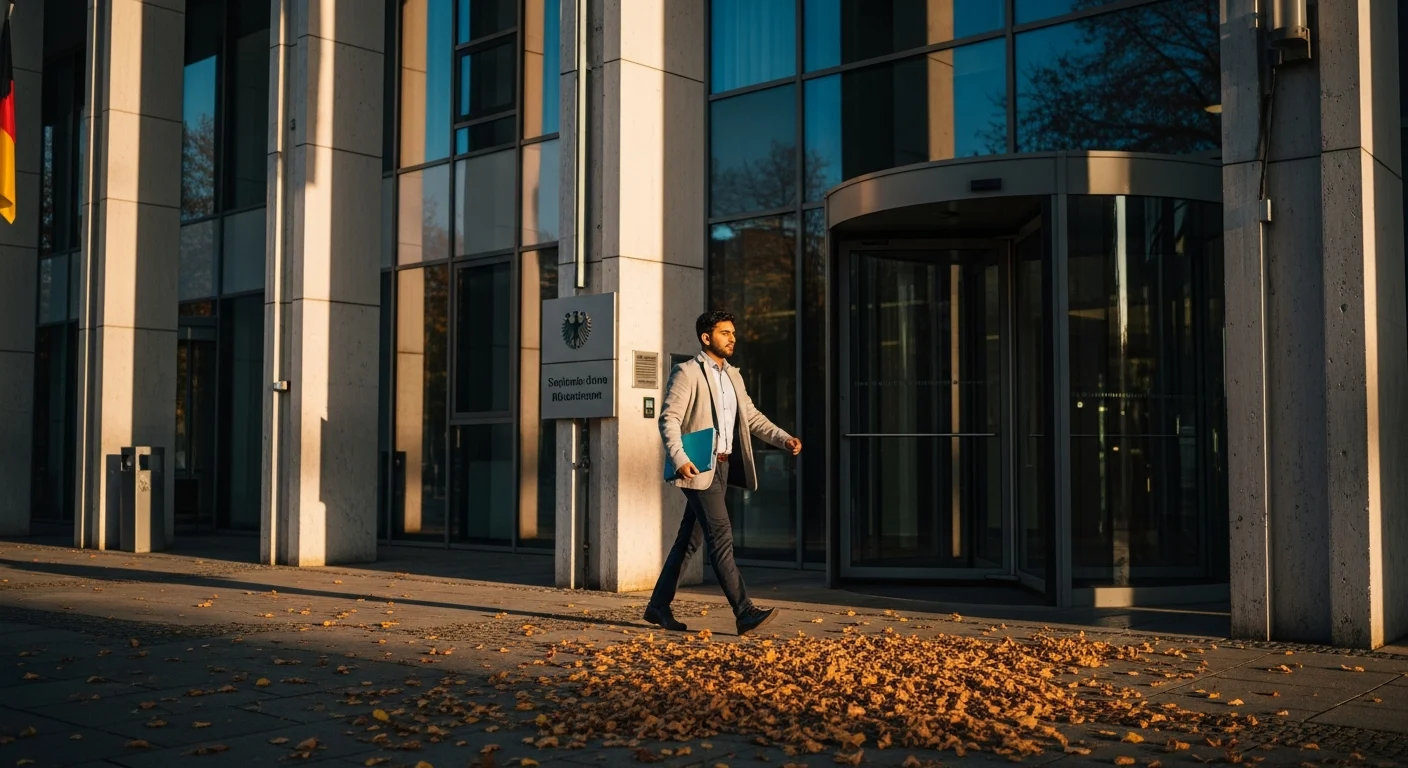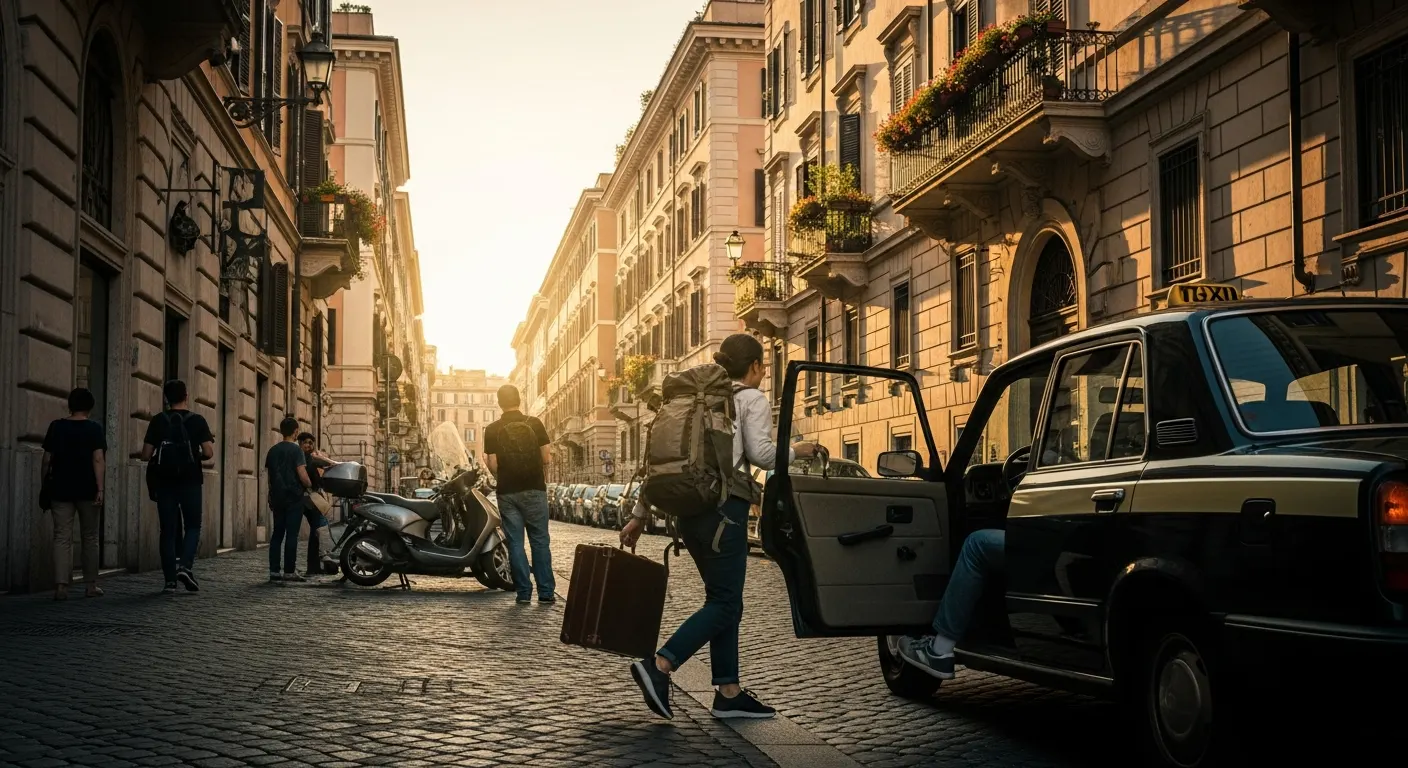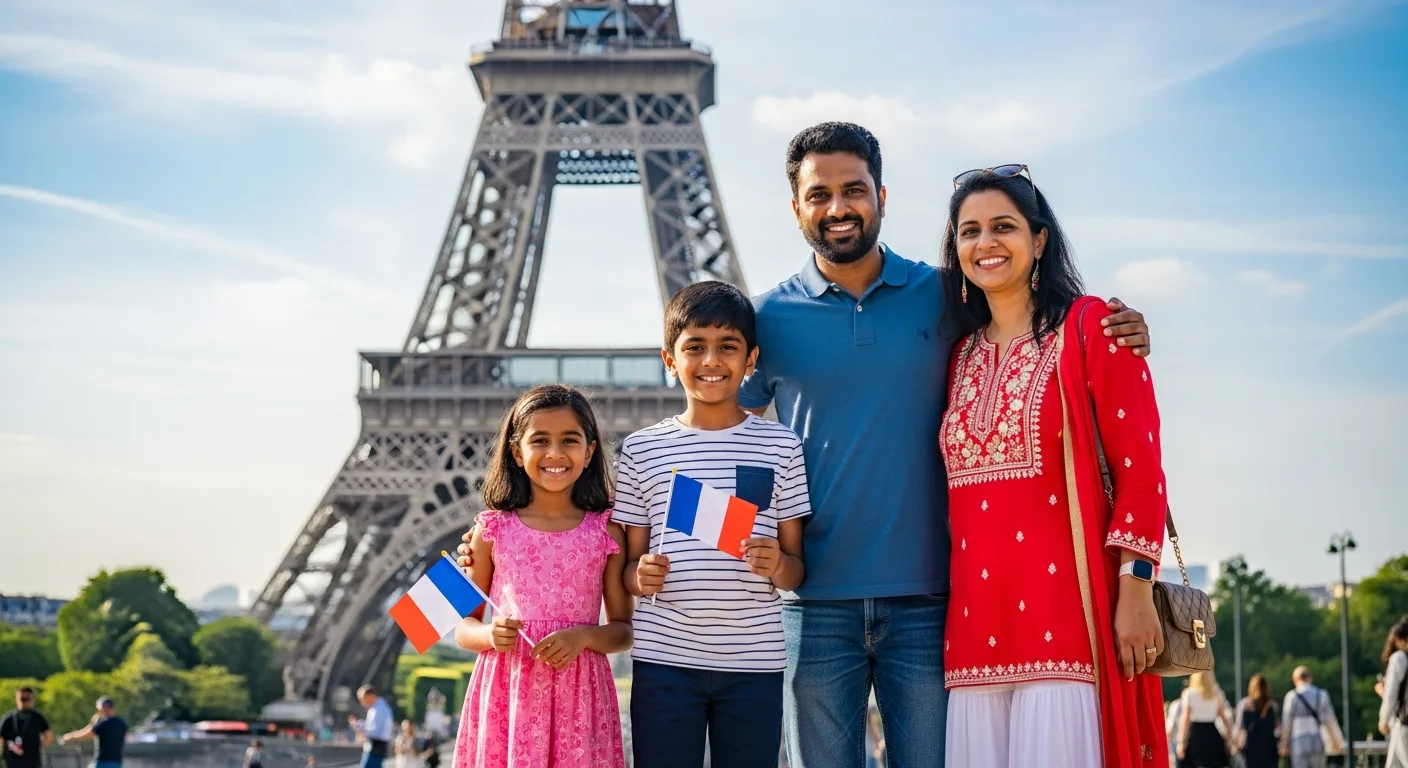Do You Need An Onward Ticket For Canada Tourist Visa From India?

Canada Tourist Visa from India: Is Onward Ticket Actually Required?
Picture this: you’ve got your Canadian tourist visa checklist ready, your documents lined up, and your excitement building. Then someone casually asks, “Do you have your return ticket?” and suddenly you’re not so sure. Does Canada really ask for it? Will the airline let you board without one? It’s the kind of question that doesn’t have a clear yes or no—and that’s exactly where most travelers from India get stuck.
The truth is, Canada’s immigration rules and airline requirements don’t always align perfectly. What matters isn’t a fixed rule—it’s how credible your travel plans look at every checkpoint. In this guide, we’ll break down what the Canadian visa officers, Indian airline staff, and border officers actually expect when it comes to onward tickets, so you can travel confidently without unnecessary risks or expenses. For more insights on preparing your application, check out our FAQ or explore additional tips in our blogs. Before submitting your application, book a dummy ticket to save yourself from stress later on! Learn about our team's expertise on our About Us page.
No — the Canada Tourist Visa (Temporary Resident Visa – TRV) does not require Indian applicants to buy a full return ticket before approval. However, IRCC officers and Canadian border agents often expect proof of onward travel to confirm that visitors will leave Canada before their authorized stay ends. A verifiable onward ticket (dummy return ticket with a real PNR) is widely accepted as safe, legal evidence of your exit plan and helps avoid refusals under “insufficient travel intent” or “unclear itinerary.” Trusted providers like DummyFlights.com issue instant, PNR-verified onward reservations that match IRCC documentation expectations without forcing you to buy expensive refundable flights.
Last updated: November 2025 — validated against IRCC Visitor Visa (TRV) travel-intent requirements for Indian travelers.
How Canada Reads Your Travel Plans Before Saying “Yes” To Your Visa
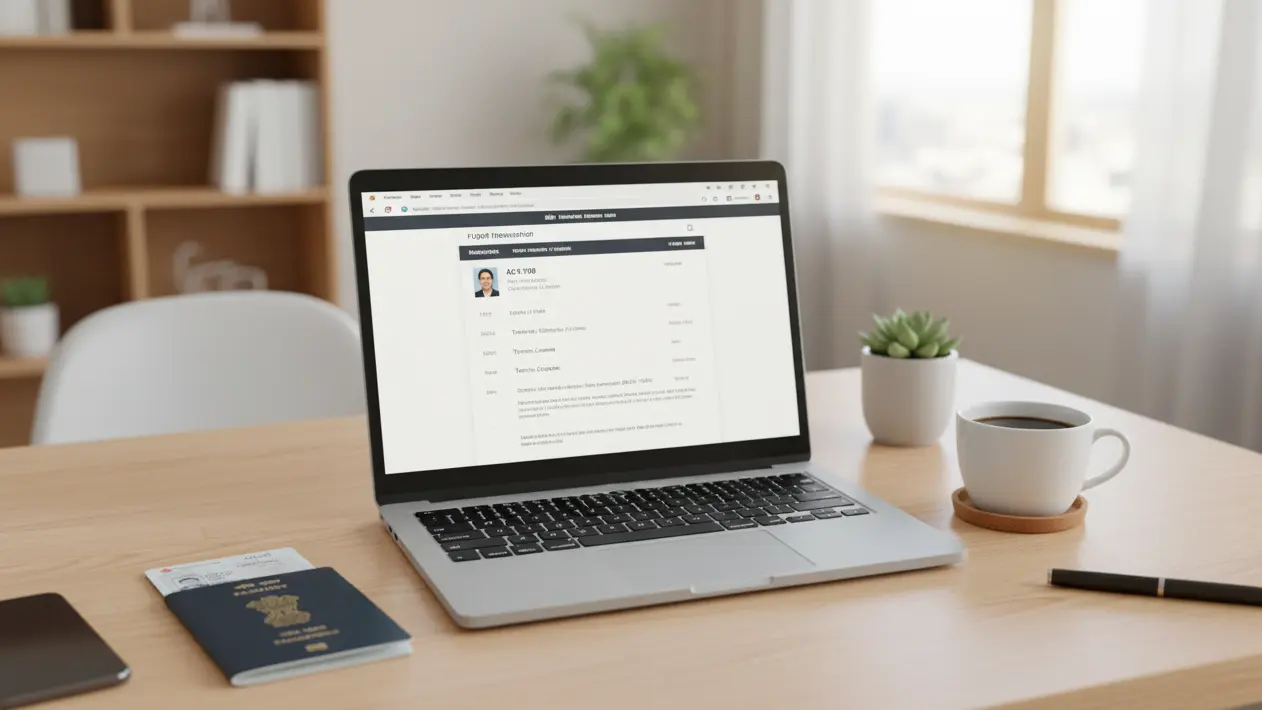
Before your passport even reaches the visa counter, Canada’s immigration system has already started piecing together your travel story. Every form, attachment, and itinerary tells them something about who you are and what you plan to do.
So, while there’s no official rulebook line saying “submit your onward or return ticket,” what visa officers really look for is simple: do your documents make it believable that you’ll come back?
That’s where a smart, well-aligned travel plan becomes your strongest ally. Including a dummy ticket as provisional proof can bridge any gaps in your itinerary, ensuring your application stands out as organized and credible.
The Real Test: Proving You’ll Return To India
For Indian travelers, this part is often misunderstood. You don’t need to show a paid return ticket—but you do need to show proof of intent to leave.
Canada’s Immigration, Refugees and Citizenship Canada (IRCC) reviews this intent through multiple lenses:
- Your travel history and whether you’ve returned on time from past trips.
- Your job, business, or studies back home.
- Family ties—spouse, parents, or dependents who anchor you in India.
- Your declared duration of stay and return plan.
It’s not about the cost of your ticket—it’s about your credibility. When your application reads like a complete, logical story, IRCC sees you as a genuine visitor, not a risk of overstaying. To enhance this, many applicants incorporate a dummy ticket to demonstrate a clear exit strategy without committing to purchases prematurely.
What Builds “Credible Intent” In A Visa File
You can think of your visa file as a jigsaw puzzle where every piece must fit together. If your flight booking says one thing but your hotel reservation says another, it weakens your story.
Here’s what makes your plan look authentic:
- A dated travel itinerary that matches the purpose and length of your visit.
- Return or onward reservation (not necessarily paid) that supports your stated timeline.
- Accommodation proof—hotel or host invitation—that matches your flight dates.
- Financial evidence showing you can afford the trip without needing to extend your stay.
- Ties to India like employment letters, business ownership, or dependent family members.
Each element quietly reinforces the same message: you’re organized, transparent, and have every reason to come back. A dummy ticket fits seamlessly here as a non-binding yet verifiable element.
Why Many Indian Applicants Lose Points Without Realizing It
A surprising number of visa refusals come from small inconsistencies. You might have strong documents, but if they don’t speak the same language, your intent appears shaky.
Common red flags include:
- Applying for a one-month stay but uploading a hotel booking for just five days.
- Declaring a two-week visit in your form but having no exit plan attached.
- Mentioning a friend’s invitation but forgetting to show where you’ll stay after visiting them.
IRCC officers review hundreds of files a day. If your travel pattern looks vague or incomplete, they won’t take the time to interpret it—they’ll simply mark “insufficient proof of return intent.” To avoid this, integrating a dummy ticket early can provide that missing piece of assurance.
How To Strengthen Your File Without Buying A Real Ticket
One of the smartest moves Indian travelers make today is submitting a verifiable flight reservation instead of a purchased ticket.
It’s perfectly acceptable to include a tentative or held booking as part of your travel plan. It shows planning without financial risk. You can simply note in your cover letter or purpose statement:
“Tentative travel itinerary enclosed—subject to visa outcome.”
That one line tells the officer you understand the process, you’ve done your homework, and you’re financially cautious.
When adding your booking, make sure:
- The travel dates align with your hotel or invitation letters.
- You’ve clearly mentioned the same period in your visa form (IMM5257).
- The reservation includes your full name, flight number, and routing.
If you’re applying online, upload the reservation under the “Proof of Travel” or “Purpose of Travel” section. Services like those at DummyFlights.com specialize in providing such dummy tickets tailored for visa needs.
How Your Cover Letter Can Quietly Do The Heavy Lifting
Most Indian applicants underestimate the power of a well-written cover letter. This is where you can subtly explain your travel timeline, goals, and return intent—all in your own words.
A short, structured letter should include:
- Why you’re visiting (tourism, family event, exploration, etc.).
- How long you’ll stay.
- Your planned travel route.
- Mention of a tentative return date.
- Proof of ties—like job, study, or family commitments in India.
Example snippet:
“I plan to visit Canada from 10 June to 25 June 2025 to explore major cities and reconnect with relatives in Toronto. A verifiable round-trip reservation and accommodation confirmations are attached. I will resume my work in Delhi immediately after my trip.”
It’s professional, concise, and instantly paints a credible picture. Referencing your dummy ticket here reinforces its role in your overall plan.
When “Intent To Leave” Gets Questioned
There are times when the officer may still doubt your return, even if you’ve uploaded everything correctly. This happens more often when:
- You’re a first-time traveler with no previous international trips.
- You’re a freelancer or digital nomad without fixed employment proof.
- You’re visiting family members with permanent residency in Canada.
- You’ve applied for a long stay (three months or more).
In these cases, your itinerary and onward plan matter even more. It tells the officer that you’re structured, self-aware, and have no reason to overstay.
A clean, realistic plan often outweighs an expensive refundable ticket. For authoritative guidelines on visa requirements, see the IATA resources.
The Smart Way Indian Travelers Present Travel Intent
Here’s how experienced applicants do it right:
- Create a realistic 15–30 day travel plan with specific cities and dates.
- Generate a verifiable round-trip reservation instead of buying an actual ticket.
- Match those dates with hotel bookings or host invitations.
- Mention those same details in the visa form and cover letter.
- Attach the documents in the correct section of your online application.
That’s all it takes to make your file look professional and well-thought-out. Expanding on this, consider how a dummy ticket not only saves costs but also allows flexibility for last-minute adjustments based on visa timelines.
Small Things That Leave A Big Impression
Sometimes, it’s not the grand gestures but the small details that matter.
Include these subtle but powerful touches:
- A short note in your itinerary explaining your travel purpose.
- A logical gap between arrival and departure—no one believes a 2-day Canada trip.
- A return flight departing from the same or nearby city you arrived in.
- Travel dates that avoid overlapping with your office or college schedule back in India.
Each small alignment builds confidence in your intent to return.
When Canada reviews your visa, they’re not just checking your papers—they’re reading your travel story. A solid itinerary backed by a verifiable return or onward plan helps your story make sense.
You don’t need to spend money on real tickets before you get your visa. What you do need is clarity, consistency, and credibility across your documents.
Get that right, and you’ve already passed the first—and most important—test in your Canada travel journey. To dive deeper into common queries, visit our FAQ.
Airline And Airport Reality: Who Actually Asks For Your Onward Ticket?

Before you head to the airport, it helps to know exactly who is asking for your onward ticket and why. The visa officer, the airline at check-in, and the Canada Border Services Agency each play a different role. Knowing what each one wants keeps surprises to a minimum.
Most travellers assume the visa is the only hurdle. In reality, the airline at departure and the officer at arrival both judge whether you look likely to be allowed into Canada. Carriers carry financial risk if they board someone who is denied entry. That is the main reason they ask for proof. A dummy ticket, with its verifiable PNR, often satisfies this without the full cost of a ticket.
How Timatic Drives Airline Decisions
Before every international flight, airlines consult Timatic. This database lists entry rules, visa requirements, and common carrier advisories for each destination.
Timatic does not lie. If it flags “onward/return proof may be required” for Indian departures to Canada, airline staff will expect some form of evidence. That evidence can be a return ticket, a verifiable reservation, or strong supporting documents that match your story.
What to keep in mind:
- Airlines want reasonable assurance, not perfection.
- Staff follow the rulebook because they are financially responsible if you are denied entry.
- Rules vary by carrier and by the specific flight routing.
What Happens At Check-In Counters In Delhi, Mumbai And Hyderabad
Arrive prepared. The check-in agent is trained to confirm travel documents quickly. If anything looks unclear, they may refuse boarding or ask for extra proof.
What agents commonly check:
- Valid passport and Canadian visa.
- Return or onward reservation that matches the dates you declared.
- Evidence of funds and accommodation when required by Timatic.
- Consistency between your travel documents and what you say.
Practical steps for check-in:
- Carry printed and digital copies of everything.
- Bring a one-page itinerary summary with dates, flights, and accommodations.
- Have a short cover note that explains your travel plan and return intent.
👉 Order your dummy ticket today for hassle-free verification at the counter.
Carriers That Tend To Be More Demanding (And Why)
Some airlines are stricter because their crew and head office enforce Timatic rigidly. Others are more flexible and rely on contextual judgement.
Airlines often reported as enforcing onward proof:
- Full-service Gulf carriers on Indian routes.
- National carriers with tight ground staff procedures.
- European carriers operating multi-leg itineraries.
That does not mean avoidance. It means you should check the specific policy for your carrier and route before you fly. For broader travel standards, consult IATA.
How Border Officers In Canada May Question Your Onward Plan
Once you land, the Canada Border Services Agency (CBSA) has the final say on entry. Their interest is straightforward: will you leave at the end of your visit?
What CBSA looks for:
- A plausible travel timeline.
- Accommodation and activities that match that timeline.
- Evidence of ties back home if your stay appears lengthy.
- Onward or return reservations when in doubt.
Show the same documents you used for your visa and check-in. A clear, consistent story makes the border interview short and cordial. Inconsistency invites more questions. A printed dummy ticket PDF can be a quick reference here.
The Difference Between A Paid Ticket And A Verifiable Reservation
You do not always need to buy an expensive refundable fare to satisfy an airline or border officer. What matters is verifiability.
A verifiable reservation shows:
- Your full name.
- Flight numbers and dates.
- A live PNR or booking reference that can be checked.
This is the point where a low-cost, verifiable reservation becomes useful. For travellers who want to avoid paying full fares before a visa comes through, an instantly verifiable booking can meet airline checks and serve in your visa file.
A practical option:
- Get a verifiable reservation that includes a live PNR and routing.
- Keep the booking PDF ready for check-in and for CBSA if asked.
If you prefer a tested solution, DummyFlights.com offers verifiable flight reservations with live PNRs. These are delivered instantly and accepted for both visa applications and airline verification. Each booking costs $15 and is designed to meet carrier and embassy checks. This approach has helped thousands of Indian travelers secure their Canada visas without upfront flight expenses.
What To Do If The Airline Still Says “We Need Proof”
If the check-in agent refuses to accept your documents, stay calm and act efficiently.
Steps you can take at the counter:
- Politely ask to speak with a supervisor or the handling agent.
- Show additional proofs such as an employment letter, leave approval, or a bank statement.
- Offer the live reservation link or PNR for on-the-spot verification.
- If time allows, buy a flexible day-of-ticket or a short refundable fare and ask for a receipt.
If none of that works:
- Consider postponing departure and resolving documentation.
- Ask about changing to a different carrier with more flexible boarding checks.
Simple Habits That Prevent Last-Minute Problems
Preparation beats panic. Build these habits into your pre-departure routine.
Pre-flight checklist for check-in:
- Confirm Timatic requirements for your carrier and route.
- Print your visa, passport bio page, and verifiable PNR.
- Carry a concise itinerary and a short letter explaining your trip.
- Keep proof of ties to India handy: employer letter, rental agreement, or dependent details.
- Check in online early and use the mobile app where possible.
You control most of the variables that matter. The airline wants to avoid financial exposure. CBSA wants to avoid admitting someone with unclear intent. When your documents tell a consistent story, both checkpoints become routine.
We travel smarter when we plan for the people checking our papers. Do that and you move through check-in and border control with confidence and very little drama. For more travel hacks, browse our blogs.
Types Of Acceptable Proofs And How To Present Them
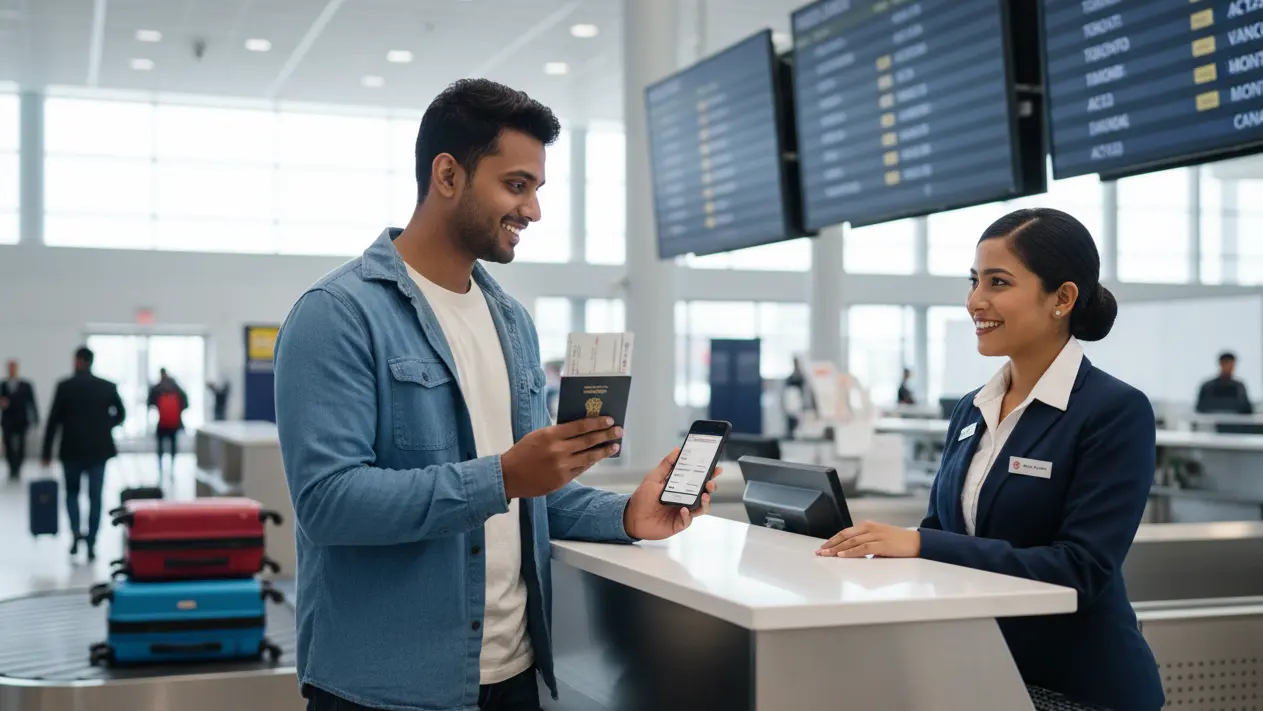
Before you finalize your travel proof for a Canada Tourist Visa from India, it’s important to understand how different types of documentation impact your visa application. Some proofs satisfy the immigration officer, others calm airline staff, and some do both. Choosing the right type ensures your Canada visitor visa process is smooth and reduces the chance of being denied entry. Among these, a dummy ticket stands out for its flexibility and verifiability.
1. Confirmed Return Ticket
A confirmed return ticket is one of the strongest proofs for a Canadian tourist visa. It provides a clear exit date and aligns with the dates in your completed application form. Your passport number on the booking should match your valid passport exactly.
When it helps most
- If you are applying for a single-entry visa or a short-term temporary resident visa.
- If your employer, university, or family members require all the documents to show fixed travel plans.
- If you want to avoid extra scrutiny from the immigration officer at check-in or upon arrival.
Smart choices for Indian nationals
- Choose a refundable or changeable fare where possible. If you book a non-refundable ticket, ensure you can adjust dates if the visa processing time changes.
- Ensure the passport number and spelling of your name match your valid passport.
- Keep a printed copy and a digital screenshot of the PNR for airline verification and for your visa application.
Why officers like it
A confirmed ticket shows the immigration officer that your plan to visit Canada is realistic and that you intend to return to India. For a temporary resident visa or tourist visa, it reduces follow-up questions and strengthens your file. However, for cost savings, many opt for a dummy ticket as an alternative during the application phase.
2. Time-Limited Flight Reservation Or Dummy Ticket
A time-limited flight reservation or a verifiable dummy ticket is another practical option. It provides proof of travel without requiring an upfront purchase. This is often used in visa applications for a Canadian tourist Visa from India.
When this is useful
- When visa processing can take longer than expected.
- When you do not want to spend money on a non-refundable ticket.
- For students, first-time applicants, or self-employed Indian nationals who need all the documents organized neatly.
What to check
- Expiry: Some reservations last only 24–72 hours. Make sure it covers your visa processing time.
- Verifiability: The booking should show a live PNR that can be checked by the airline or immigration officer.
- Details: The itinerary must include your full name, flight numbers, and your passport number.
How to present it in your visa application
- Upload the PDF or screenshot under uploaded documents in your visa application portal.
- Mention in your cover letter that the reservation is tentative and subject to approval.
- Carry a printed copy when traveling to enter Canada.
Dummy tickets are particularly popular among Indian applicants due to their instant delivery and unlimited revisions, allowing alignment with evolving visa schedules.
3. Multi-City Or Onward Exit Proof
If your trip includes stops in multiple cities or countries, a multi-city itinerary or onward exit proof is necessary. This is especially relevant for holders of a multiple-entry visa or those planning to connect onward to the U.S. or other destinations.
When it matters
- If you hold a valid U.S. visa and plan to visit Canada before entering the U.S.
- If you have a multiple-entry visa with legs that continue mid-trip.
- For trips involving more than one city in Canada or protected areas.
Points to watch
- Airlines may ask for proof to enter Canada or transit through certain countries.
- Keep your travel documents consistent, including your passport, return ticket, and itinerary details.
- Show any visas or permissions for onward travel to avoid being denied entry.
4. Internal Travel Proofs
A detailed internal itinerary demonstrates planning and reduces the impression that you intend to overstay. This is useful for a Canadian Tourist Visa from India for trips moving between provinces.
What works here
- Intercity flights, trains, or bus bookings.
- Hotel or Airbnb confirmations for consecutive city stays.
- Event tickets or sightseeing reservations on set dates.
Why it helps
An organized internal itinerary reassures the immigration officer that your visit to Canada is structured, even for a longer temporary resident visa or a super visa application. Pairing this with a dummy ticket for the international leg creates a comprehensive travel narrative.
5. Overland Exit Plans
Some travelers plan to exit Canada overland to the U.S. or other neighboring countries. This approach works but requires additional proof.
What to include
- A valid travel document for your next destination.
- Visas if required by certain countries.
- Confirmation of onward reservations for airlines and border checks.
Practical warning
Transit rules in other countries may be stricter than in Canada, so verify all required documents before you visit Canada. A dummy ticket can serve as initial proof, but confirm overland specifics separately.
How To Include Proofs In Your Visa Application
Presentation is critical. Your uploaded documents, cover letter, and completed application form must all align.
Steps to follow
- Attach return ticket, dummy ticket, or internal travel proof under uploaded documents.
- Reference it in your cover letter or invitation letter if applicable.
- Ensure hotel confirmations or family information form dates match your itinerary.
- Include additional documents like employment letters, bank statements, or custody documents for minors.
What to avoid
- Uploading expired or cancelled reservations.
- Screenshots missing the PNR, flight numbers, or passport number.
- Mixing dates across visa application, return ticket, and invitation letter.
Sample Visa Application Paragraph
“I plan to visit Canada from 10 July to 24 July 2025. A verifiable round-trip reservation (Delhi–Toronto–Delhi), hotel confirmations, and employment leave approval are attached. All the documents match the dates in my completed application form.”
This clarity helps the immigration officer quickly understand your intent to return to India and ensures a smooth visa processing experience.
Practical Tips To Get A Canada Tourist Visa From India
- Keep a printed summary of all the documents, including passport, return ticket, and PNR.
- Include travel insurance and policy numbers.
- For a long processing time, choose verifiable reservations that remain valid until your temporary resident visa is issued.
- Maintain consistent details across your visa application, invitation letter, and other required documents.
When your Canada tourist visa documentation is consistent, you reduce surprises and travel confidently to enter Canada. Remember, a well-chosen dummy ticket can be the key to tying it all together.
Tricky Situations, Common Pitfalls, And Checklist
A few travel plans digress from the standard playbook. These are the moments that create friction at check-in or at the border. Below, we walk through the oddballs and the traps. Then we give a tight, printable checklist you can use before leaving India. Read it like a travel hack list — short, practical, and tested. For your Canada visa, book a dummy ticket and save yourself from rejections.
When Multiple-Entry Visas Meet Real-Life Plans
Multiple-entry visas sound liberating. They allow repeat visits over the visa validity period. They do not remove the need to show intent to leave on each trip.
If you hold a multiple-entry visa, demonstrate return intent for every entry. Carry a fresh itinerary or reservation for that specific trip. A past visa stamp does not replace the current proof.
Students returning for short holiday breaks should show class rejoining dates or university leave letters. Family visitors should show a return ticket or a clear date to resume work in India. Digital nomads should present proof of ongoing ties to India, like invoices, client agreements, or a local tax receipt. In all cases, a renewable dummy ticket can adapt to multiple entries.
Long, Flexible Trips: How To Avoid Looking Aimless
You can stay in Canada up to the limit the officer permits, commonly six months per visit. Flexible long trips can raise concern if they appear indefinite.
Plan with structure. Break long stays into city blocks with dates and accommodation. Say, 10 days in Toronto, 12 days in Montreal, 8 days in Vancouver. Book at least the first two weeks of accommodation and include internal transfers. That shows a framework without locking all your plans.
If your work is location-independent, include client contact details, recent invoices, or proof of remote employment. These items show you have reason to return to India and that your travel is planned, not permanent. A dummy ticket with adjustable dates supports this flexibility without extra costs.
Open-Jaw Itineraries And Multi-City Returns
Open-jaw trips — fly into one city and out of another — are perfectly acceptable. They do require clarity.
Ensure your itinerary and any reservation reflect the exact arrival and departure cities. For example, if you fly Delhi to Toronto and return from Vancouver to Delhi, your supporting reservation should show that routing.
Airlines sometimes ask for the full route. If your booking only shows the outbound, add an onward or return reservation that matches your stated departure city. Keep documentation consistent across your application, cover letter, and printed itinerary. Dummy tickets can be customized for such complex routings.
Family Visits And Invitation Letters: Make Dates Match
An invitation letter is helpful. It becomes counterproductive if dates do not match other documents.
Ask your host to state exact intended visit dates and accommodation details. The invitation should include the host’s contact details and their status in Canada. Then match those dates to a return reservation or verifiable hold.
If visiting multiple family members across provinces, include a short internal itinerary. Show where you will stay and when. That prevents confusion at check-in and at border control.
Transit Through Third Countries: Check The Rules Twice
Connecting flights through the U.S., UK, or Schengen countries can add rules to your journey. Some transit points require proof of onward travel even for layovers.
If you transit the U.S., carry your valid U.S. visa and a clear onward ticket. If you transit the UK, verify whether you need a transit visa or onward proof. Airlines and transit airports may refuse boarding if transit requirements are unmet.
Before you leave India, check transit rules for each stop. Timatic and your airline’s customer support are reliable sources for this. For Schengen transit specifics, refer to Schengen Visa Info.
Special Cases: Minors, Custody Documents, And Complex Family Situations
Traveling with a minor requires extra paperwork. Carry the child’s birth certificate. If one parent is absent from the trip, carry a notarized letter of consent from the non-travelling parent. If guardianship is involved, include custody documents.
Immigration officers are cautious about minors. Clear, legal documentation removes doubt and avoids delays. Ensure any dummy ticket includes all travelers' names for family applications.
Common Pitfalls And How To Fix Them Quickly
These are the mistakes we see most often and how to remedy them fast.
Mismatched Dates
- Problem: Flight shows 20 July return while hotel ends 10 July.
- Fix: Update the hotel or flight so both match. If you cannot, add a cover note explaining the reason.
Expired Holds Or Reservations
- Problem: A 48-hour hold expired before the visa decision.
- Fix: Secure a new verifiable reservation that lasts longer or use a provider that issues an extended hold.
Missing Proof For U.S. Entry
- Problem: No valid U.S. visa but itinerary shows onward to the U.S.
- Fix: Remove the U.S. leg from the itinerary until you hold the required visa, or add a different onward destination that does not require extra entry permission.
Inconsistent Names Or Passport Numbers
- Problem: Booking shows a nickname or wrong passport number.
- Fix: Re-issue the reservation with the exact name and passport number as on your passport.
Digital-Only Files At Check-In
- Problem: Mobile network problems prevent showing your reservation.
- Fix: Always carry a printed copy of key documents: visa, passport bio page, booking references, and cover letter.
Printable Pre-Departure Checklist
Print this and keep it in your carry-on. Use it as the final gatekeeper before you leave India.
- Valid passport with at least one blank page for entry stamps.
- Canadian visa or electronic travel authorization as applicable.
- Verifiable return or onward reservation (printed + digital).
- Accommodation confirmations for arrival dates.
- Short itinerary summary with dates and city details.
- Cover letter or travel purpose note matching your application.
- Proof of ties to India: employment letter, university leave letter, property papers, or dependent details.
- Financial proof: recent bank statement or fixed deposit receipt.
- If transiting: valid visas for transit countries and onward tickets.
- For minors: birth certificate, consent letter, custody documents as applicable.
- Travel insurance policy number and proof.
- Emergency contact list including host details in Canada.
After Visa Approval: Update Plans Smartly
Once the visa is in hand, update any temporary bookings that have short validity. Replace expired holds with firm reservations if needed. Inform your airline if your passport number has changed or if your name has been corrected.
If you change dates after the visa is issued, keep the same documentation logic. Ensure the new return date still proves intent to leave within a reasonable timeframe.
Edge cases and pitfalls are avoidable. The key is consistency. When your papers tell a single, sensible story, the airline staff and immigration officer see a confident traveler who plans to return. That minimizes questions and saves you time, money, and stress. To expand your knowledge, read more in our About Us section on how we support such journeys.
Canada Visitor Visa: Your Ticket to a Smooth Journey
Travelling from India to Canada doesn’t have to be complicated. What matters most isn’t whether you buy a full return ticket—it’s whether your overall plan makes sense to the Government of Canada. When your documents align, your itinerary is realistic, and your return intent is clear, visa officers and airline staff see confidence, not confusion.
A verifiable onward reservation or return booking helps show that intent, especially when combined with proof of ties, any required biometrics fee receipts, or a statutory declaration for a common law union, spouse, or minor child. You may also authorize a designated individual to handle parts of your application, but you should never need to release personal information beyond what the process requires.
Visitor visas don’t replace a work permit and may have limits on entering restricted or protected areas. So make sure your travel story adds up on paper, and you’ll breeze from visa submission to the boarding gate. Get your travel documents ready in minutes with a quick dummy ticket booking.
To further prepare, consider common scenarios like seasonal travel peaks or group applications, where dummy tickets provide scalable solutions. This ensures your family or group visa process remains coordinated and error-free.
Why Travelers Trust DummyFlights.com
DummyFlights.com has been helping travelers since 2019, specializing exclusively in verifiable dummy ticket reservations for visa applications worldwide. We've supported over 50,000 visa applicants, including thousands from India heading to Canada, with our instant PDF delivery and 24/7 customer support team.
As a registered business with a dedicated support team—not automated responses—we ensure secure online payments and niche expertise in onward travel proofs. DummyFlights.com focuses solely on dummy tickets, providing unlimited changes and PNR-verifiable bookings that meet embassy and airline standards. Our commitment to factual, reliable service builds trust for every journey.
What Travelers Are Saying
Related Guides
About the Author
Visa Expert Team - With over 10 years of combined experience in travel documentation and visa assistance, our team at DummyFlights.com specializes in creating verifiable travel itineraries. We’ve helped thousands of travelers navigate visa processes across 50+ countries, ensuring compliance with embassy standards.
Trusted Sources
- U.S. Department of State - Visa Information
- Schengen Visa Information
- International Air Transport Association (IATA)
Important Disclaimer
While our dummy tickets with live PNRs are designed to meet common embassy requirements, acceptance is not guaranteed and varies by consulate or country. Always verify specific visa documentation rules with the relevant embassy or official government website before submission. DummyFlights.com is not liable for visa rejections or any legal issues arising from improper use of our services.


